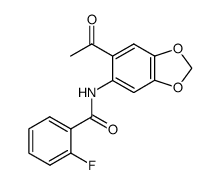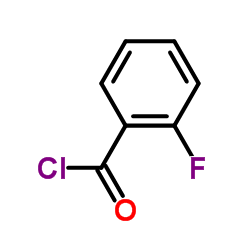154554-41-3
| Name | 6-(2-fluorophenyl)-5H-[1,3]dioxolo[4,5-g]quinolin-8-one |
|---|---|
| Synonyms |
2-(2-fluorphenyl)-6,7-methylenedioxyquinolin-4-one
1,3-Dioxolo[4,5-g]quinolin-8(5H)-one,6-(2-fluorophenyl) 2-(2-fluorophenyl)-6,7-methylenedioxyquinolin-4-one 2'-fluoro-6,7-methylenedioxy-2-phenyl-4-quinolone 6-(2-fluorophenyl)-[1,3]-dioxolo[4,5-g]quinolin-8(5H)-one CHM-1 2-(2-fluorophenyl)-6,7-methylenedioxy-2-4-quinolone hydrate |
| Description | CHM-1, a microtubule-destabilizing agent, inhibits tubulin polymerization. CHM-1 is a potent and selective antimitotic antitumor activity against human hepatocellular carcinoma. CHM-1 induces growth inhibition and apoptosis via G2-M phase arrest in human hepatocellular carcinoma cells by activation of Cdc2 kinase activity[1][2][3]. |
|---|---|
| Related Catalog | |
| Target |
IC50: 0.75 μM (HA22T)[1] |
| In Vitro | CHM-1 (0-100μM; 24 hours) induces significant concentration-dependent growth inhibition in HA22T, Hep3B, and HepG2 cells, with the most potent effects observed in HA22T cells (IC50 = 0.75 μM)[1]. CHM-1 (0-10 μM; 24 hours) significantly increases the binding of cyclin B1 to Cdc2 in HA22T cells[1]. Cell Viability Assay[1] Cell Line: HA22T, Hep3B, and HepG2 cells Concentration: 0-100 μM Incubation Time: 24 hours Result: Induced G2-M arrest of the cell cycle followed by apoptosis. Western Blot Analysis[1] Cell Line: HA22T cells Concentration: 0-10 μM Incubation Time: 24 hours Result: Induced change in expressed and phosphorylated status of G2-M regulators in human hepatocellular carcinoma cells. |
| In Vivo | CHM-1 (10 mg/kg; I.p.) induces a dose-dependent inhibition of HA22T tumor growth[1]. Animal Model: Male severe combined immunodeficient mice (HA22T)[1] Dosage: 10 mg/kg Administration: I.p. Result: Induced a dose-dependent inhibition of HA22T tumor growth. |
| References |
| Molecular Formula | C16H10FNO3 |
|---|---|
| Molecular Weight | 283.25400 |
| Exact Mass | 283.06400 |
| PSA | 51.32000 |
| LogP | 3.06290 |
|
~% 
154554-41-3 |
| Literature: Xia; Yang; Hackl; Hamel; Mauger; Wu; Lee Journal of Medicinal Chemistry, 2001 , vol. 44, # 23 p. 3932 - 3936 |
|
~% 
154554-41-3 |
| Literature: Li; Wang; Kuo; Wu; Lednicer; Lin; Hamel; Lee - Journal of Medicinal Chemistry, 1994 , vol. 37, # 8 p. 1126 - 1135 |
|
~% 
154554-41-3 |
| Literature: Li; Wang; Kuo; Wu; Lednicer; Lin; Hamel; Lee - Journal of Medicinal Chemistry, 1994 , vol. 37, # 8 p. 1126 - 1135 |


